Writing for Presents: Conflict and Escaping Cliche
I touched briefly on conflict, and the way I execute a complete romance with only 50K words in my basics post, and in this post, I want to take a more detailed look at 50K word conflict. And escaping cliches while still fulfilling the promise of the line.
In a longer novel, there’s often a full, secondary story happening in conjunction with the primary story. There are characters other than the h and H who get a lot of screen time and who even have their own sections of POV.
While you do see characters beyond the hero and heroine in a Presents, they’re not really true secondary characters. They’re more peripheral characters. Because if too much time is spent on a quirky best friend, no matter how funny and fabulous she is, she can steal too many words for herself, and cut into the developing romance between the hero and heroine. (Girl, get your own book!)
With so few words to set up a plot, conflict, romance, conflict resolution, and believable HEA, the primary focus MUST be on the hero and heroine and their developing relationship.
But it’s not only loud-mouthed side characters that can cut into that development. Too many threads of external conflict can keep the reader from really getting to know the characters.
I can only speak for myself, but when too many external elements creep in, my characters start…breaking character. Because I’m jerking them around at breakneck speed to try and squeeze all my ideas into a manuscript they simply won’t fit in. When that happens, my editor always asks me to examine what the core of the book is, and work from there.
My May release is a good example of this. I started with: the heroine running from an arranged marriage, but terrorists are after her, so when the hero comes to save her they have to travel around quickly to stay safe and seek asylum in fabulous locations, oh yeah, and they can’t be together because she’s engaged to his brother.
My editor read this and went…too much. All of the *stuff* was crowding out the TRUE conflict of the book, which was NOT running from terrorists. The true heart of the book was duty vs desire. It was a forbidden love story that was getting buried.
If I’d had 80-90K of course all of that would have fit. I would have needed it. But for a 50K book, it was crowding out the real meat of the story.
Losing the terrorist/running element, allowed me to focus in on a princess seeking a few months of true freedom, and a man fighting desperately to hold onto his honor in the face of desire that tests resolve he’s always considered unbreakable. And that created a much more complicated, satisfying read in the end. Complicated because the focus was in more tightly on emotion, and what the true cost of an affair between the h and H would be.
That leads me to the dreaded cliche. There is nothing new under the sun. There are elements that are common in romance novels because they read well and…well, they’re common in real romance.
It’s execution that keeps it out of cliche. It’s funny, I’ve read chapters of Presents attempts before where I thought the writing was perfectly competent, but something about it was lacking. It was like the characters were doing things simply because the writer believed it was about the time in that kind of book to have that happen. And THAT is what creates cliche.
Category has guidelines, but it is not a paint by number. Character actions and reactions need to drive the book, not a well placed scene where the heroine faints from shock simply because other heroines have fainted from shock upon seeing the hero after ten years. Ask if YOUR heroine would faint from shock. Or if she’d punch him the gut. Or pretend she didn’t see him. Or act like nothing had ever passed between them. But make sure the reaction is true to the character you’ve created, not to an archetype. (And if your heroine would faint, great, have her faint, but know WHY.)
If you’re writing a MS where the hero and heroine have to marry for some reason, so you know you’ll be writing a wedding, ask what that wedding means TO THEM, and approach it that way.
Bring your unique voice, and your characters’ unique way of seeing things into play, and you’ll have scenes that are relevant, and important.
I think the summation of my long-windedness, is to remember that your characters are the important part. They bring the MS alive, they, along with your own voice, are what will make you stand out. So let them have their voice, make them, and their relationship, the center of your MS.
Any questions? Feel free to ask in the comment section and I’ll answer!
Comments
11 Responses | TrackBack URL | Comments Feed

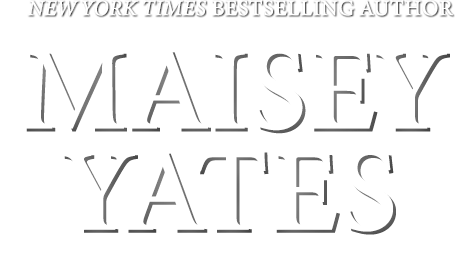
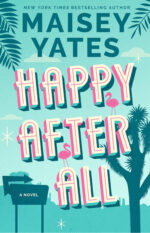
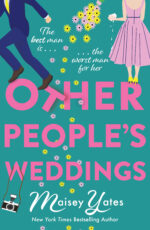

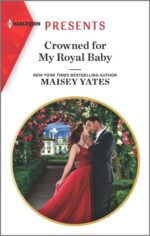
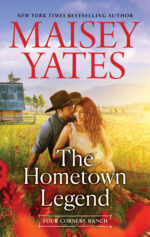
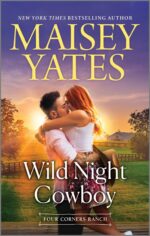
I think that’s one thing that Presents does so well: focus on the story. It’s really a very short book that can be read in just a few hours, but because of the authors remember what’s important to the story, they still deliver a great read.
No questions from me, Maisey. Thanks for sharing this…very good information. As Im Editing my latest wip, I’ve been trying to put these same things into effect…so this was very timely and a reinforcement of what I’ve been doing. Now, to do it really well!!
Julia, that’s why conflict and character is SO important. There is so much less time to make a reader care, and to make them feel they’ve experienced a ‘whole’ story.
Kristina, glad this helped! Good luck to you!
“Too many threads of external conflict can keep the reader from really getting to know the characters.”
External meaning what exactly? Something that happens in a scene, but helps the reader understand why the character is how they are? Can external be the result of internal? Gosh, I know what I want to ask, but not sure if the meaning is clear!
On a side note – I just ordered your April and May books from eHarl!
Marcie, I’ll try to explain myself a little better. 🙂 And I think I know what you’re asking! External conflict is the heroine wanting to get her father’s business but her father thinking she can’t handle it. And the hero agrees to help if she’ll pose as his fiancee at a gala event. And they’re being chased by terrorists.
These are all outside, or external factors. They aren’t the true thing keeping the hero and heroine apart. So, the internal would be, the heroine doesn’t trust men because her ex-husband cheated on her. And the hero’s might be that in his marriage, his wife was always jealous and suspicious, and he needs someone to simply trust him. (eek, that would be a tangled one…)
But if we get to much focus on the business, the reason the hero needs the fake fiancee, and the terrorists, then we might never get to the heart of their internal issues. The *real* things they need to overcome in order to have a believable HEA.
So you lose the terrorists, and the external conflict that’s left helps propel the story forward, while the focus can stay on the internal conflict, the issues that are inside of them.
I’ve heard it put, external conflict is what brings them together (the need for the hero’s help with getting a business) and the internal pulls them apart (her trust issues).
And yes, the internal and external should compliment each other. And if the external things are a result of internal issues, then it becomes more believable.
So that was kind of a silly example, but I hope that helps. If not, keep asking questions, I don’t mind!!
Also, thanks for ordering the books! Hope you enjoy them!
Very helpful post, Maisey. I tend towards the opposite problem… too much internal conflict, and not actually enough going on! I think The Inherited Bride reads great without the terrorists 🙂
I’m all squee-ey that you read it!!
Also, I think that’s becoming my tendency. I hit the extremes. Happy medium please?
Well, I *had* to read your sheikh’s forbidden virgin, didn’t I?! It was great. I loved Isabella taking a photo of the blue door.
I think it’s becoming clearer now. Still a slightly cloudy in the ol’ mind, but if I stop thinking about it so much I’ll probably get it!
Thanks so much for the explanation. Now to put your explanation to what I’m doing.
p.s. I’m sure I’ll enjoy the books. I liked the first one so I’m confident the trend will continue!
Great post Maisey – thanks for sharing. The internal/external conflict balance is *so* hard to get right! Get it right and HM&B should come ‘a’knocking. Well that’s my hope anyway! Caroline x
Aww…thank you Kate! You know I loved yours. Loved loved.
Marcie, I’m glad it’s clearer! If you have more questions, don’t hesitate to ask!
Caroline, it is a tricky balance. I think I have to kind of fight with it during each MS. But I think getting a true understand of what it means and how to apply it is the thing you need to really be on your way with M&B. With any pub really. Because while the ratio of IC to EC may be different, it is in each line, you still need to know what you’re doing!